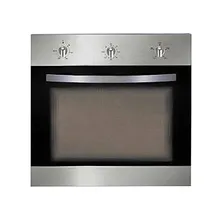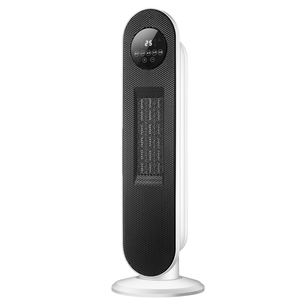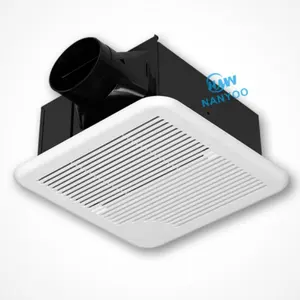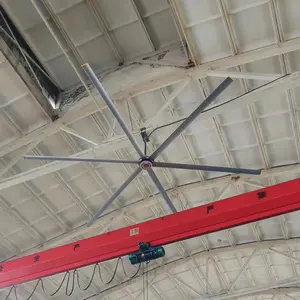Introduction
As winter approaches, the need for a reliable heating solution becomes paramount. Heated fans, with their ability to quickly and efficiently warm up a room, are a popular choice. But with a variety of types, brands, and features available, how do you choose the best one for your needs? This comprehensive guide will walk you through the world of heated fans, from understanding what they are and how they work, to exploring different types such as fan heaters, ceramic heaters, and infrared heaters. We'll delve into key features to consider when choosing a heated fan, including heat settings, safety features, noise level, energy efficiency, and size. We'll also highlight top models, and provide tips on maintaining your heated fan for optimal performance.
Understanding Heated Fans: What They Are and How They Work
A heated fan, also known as a fan heater or blow heater, is a device that uses a fan to pass air over a heat source, typically a heating element. This process heats up the air, which then leaves the heater, warming up the surrounding room. Fan heaters can heat an enclosed space such as a room faster than a heater without a fan. However, they do create a degree of noise due to the fan operation.
Types of Heated Fans
Fan heaters are a popular type of heated fans, known for their quick heating ability. They work by using a fan to pass air over a heat source, which is then dispersed into the room. Another type is the ceramic heaters, which heat up a ceramic element that then radiates warmth into your space. Infrared heaters, on the other hand, emit infrared light that humans perceive as heat. They heat objects directly, rather than the air, providing efficient warmth.
Fan Heaters
Fan heaters are extremely handy to have, ready to use in the event of a cold snap or emergency. You may not have considered just how versatile and useful a fan heater is, but they can be used for a variety of purposes and offer several advantages. Fan heaters provide instant warmth, making them an ideal choice for quick heat distribution in any room. They are portable and easy to use, making them a popular choice for those seeking a convenient heating solution.
Ceramic Heaters
Ceramic heaters work using resistive heating, passing an electric current through a ceramic plate to produce heat. They heat quickly and are energy efficient, with an efficiency of 85-90%. Ceramic heaters are safe, with features like tilt detection technology and no emission of harmful fumes. They are also portable, making them versatile for use in various spaces. Modern ceramic heaters come with features like thermostats, timers, and 'open window detection'. They are affordable to buy and run, making them a great choice for heating.
Infrared Heaters
Infrared heaters are a popular type of heated fan, known for their efficiency and effectiveness. These heaters often come with features like remote control, thermostat, digital display, and energy-saving modes. They are available in different designs such as cabinet, compact, tower, panel, and dish. Prices range from affordable to premium, catering to various budgets.
Key Features to Consider When Choosing a Heated Fan
When choosing a heated fan, consider factors like airflow and noise level. Look at cubic feet per minute (CFM) numbers to gauge how well the fan moves air. Fans with higher CFM numbers move more air but can also be noisier. Additionally, consider the fan's energy efficiency. Fans with energy efficiency labels are 60% more efficient. Also, consider the size of the fan relative to your room. Larger fans work best in larger rooms but can be run at slower speeds for less noise. Lastly, check the fan's wet/damp rating if you plan to use it in a damp environment.
Heat Settings and Thermostat
When choosing a heated fan, consider the heat settings and thermostat features. Some fans offer multiple speed settings, allowing you to adjust the heat output to your preference. Fans with adjustable thermostats provide you with precise temperature control. A fan with a built-in thermostat can automatically maintain the desired room temperature, enhancing comfort and energy efficiency. Some models even come with a digital thermostat and display for easy operation. Remember, the more control you have over your fan's settings, the more you can customize your heating experience.
Safety Features
When choosing a heated fan, safety should be a top priority. Some models are designed with multiple safety features. They have an overheat auto-shut off protection that turns off the heater when it gets too hot, preventing potential fire hazards. Additionally, they include a tip-over safety switch that automatically shuts off the heater if it tips over. The heater also features a cool-to-the-touch plastic housing, ensuring it's safe to handle even when it's operating at its maximum heating output. These features make it a reliable and safe choice for heating your space.
Noise Level
When choosing a heated fan, noise level is a crucial factor to consider. The quietest heaters fit into the background noise of a typical house, which ranges between 25 dBA and 40 dBA. Heaters with fans distribute heat best, but they can be noisy. Radiator-type space heaters are the quietest because they lack a fan. The noise level of space heaters can range from about 30 dBA to 56 dBA, with most models having a decibel level in the low- to mid-40s. Therefore, it's essential to consider the noise level to ensure your environment remains comfortable.
Energy Efficiency
When it comes to energy efficiency, fan heaters offer a range of features that can help you save on your energy bills. Many models come with energy-saving modes that adjust the heat output based on the room's temperature. Some fan heaters also include a thermostat for precise temperature control, and a timer that allows you to set the heater to turn on or off at specific times. Additionally, digital displays on these heaters provide clear and accurate temperature readings, enabling you to manage your energy usage more effectively.
Size and Portability
When it comes to size and portability, heated fans come in various forms. A key example is a model with a slim profile, which is highly portable and easy to use. This compact design allows for easy movement and placement, making it an ideal choice for those who need to heat different areas at different times. The portability of these heaters makes them a convenient heating solution for any space.
Top Heated Fan Models
There are many top models available on the market. Some offer multiple fan and heat settings, and a breeze that can be felt across the room. For small rooms, compact and lightweight models are available. There are also premium options with multiple speed settings and wide oscillation. Budget-friendly choices with easy-to-understand controls are also available. Portable models with adjustable, energy-saving thermostats are also popular. There are even models perfect for bathrooms, and some that operate as multiple appliances.
Maintaining Your Heated Fan for Optimal Performance
Maintaining your heated fan, such as an indoor space heater, is crucial for optimal performance and safety. Regular use can lead to dust accumulation, reducing efficiency and posing fire risks. To clean, unplug the device and wipe with a dry cloth. Avoid using a wet cloth or cotton yarn. For internal dust, use a brush. Place the heater in a dry, ventilated area after cleaning. For internal cleaning and repairs, consider consulting a specialist.
Conclusion
Choosing the right heated fan can make a significant difference in your comfort during the colder months. Whether you prefer the quick heating ability of fan heaters, the energy efficiency of ceramic heaters, or the direct warmth of infrared heaters, there's a model out there to suit your needs. Key considerations such as heat settings, safety features, noise level, energy efficiency, and size can guide your decision-making process. And remember, maintaining your heated fan is crucial for its optimal performance and longevity. With this guide, you're now equipped to make an informed choice and stay warm and cozy all winter long.








































 浙公网安备 33010002000092号
浙公网安备 33010002000092号 浙B2-20120091-4
浙B2-20120091-4